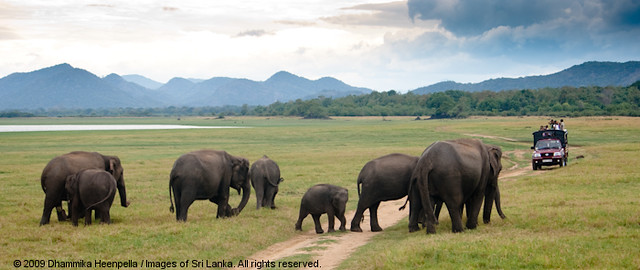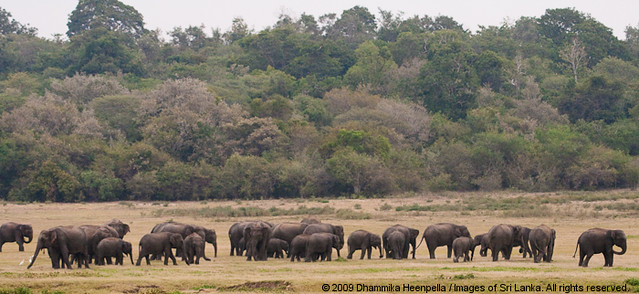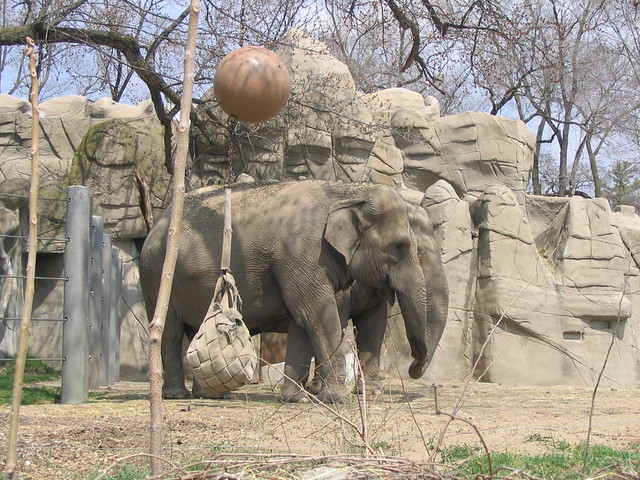Elephants in captivity: What would they choose if they had a choice?
08 June 2018
How wild elephants stay happy and healthy during long, meaningful lives is well-known, yet zoos consistently fail to meet basic needs – we must ask why.
By Dave Neale Animal Welfare Director
Asian elephants are considered “small” in comparison to their African cousins, but adults can still reach over 3 metres tall, 6 metres long and weigh over 5 tonnes.
They live in family groups of calves, mothers, aunties, grandmothers and great-grandmothers, wandering over vast areas of forest and grassland, led by a matriarch, in search of food.
They raise their calves as a family. They pass on knowledge of the location of resources and the skills to access them.
They communicate with each other through sub-sonic rumbles over large distances, and via an incredible sense of smell to ensure each individual is aware of where other family members are throughout the day. If they spend any length of time separated, they will intricately caress, touching their trunks to each other’s mouths when they are reunited.
They are essentially a highly social, highly intelligent and highly emotional species with very specific needs which – if they are within a protected natural area – their environment provides for them.
What we know of how elephants live in the wild, gives us a baseline to judge how they are kept in captivity.
At zoos, safari parks or any other facility where elephants are kept, we should ask ourselves, how this life compares to the one the elephants would have in the wild.
Do they live in a family group and if so, is this a natural family group of relatives? Do they have access to woodland and grassland areas? Do they have free choice as to when and for how long they access these resources? Do they live within a sufficiently complex environment to challenge their cognitive capabilities?
In all the years that I have been visiting zoos across the world, I have never once come across a zoo environment which meets these natural needs. In fact it is only at a small number of elephant sanctuaries that I am aware of where these needs are being prioritised and are the primary objective of the facility.
Treating the symptoms of captivity
Thousands of elephants now live in zoos. Elephant keepers and zoo directors spend vast amounts of time and resources trying to improve the welfare of their individual animals through behavioural management, environmental enrichment, and footcare training programmes. All of which should be commended as they have the capacity to improve the welfare for the individual elephants.
But the question we do not ask often enough is, why exactly do we need these training programmes?
We need them because we are essentially asking elephants to live in an environment that they have not evolved to live in.
Wild elephants do not require weekly footcare, their feet have evolved to suit their forest environment.
Wild elephants do not need to have their wild forest environment enriched in weird and wonderful ways, the natural environment does this for them.
And wild elephants do not need behavioural training programmes to stimulate their minds and to train them to have their blood sampled for possible diseases and parasites. Their natural environment provides them with all the cognitive challenges they could desire.
Captive elephants need regular footcare because we ask them to stand and walk on surfaces that their feet have not evolved to cope with over long periods of time. They need mental stimulation through the development of environmental enrichment and behavioural training to ensure they do not simply become bored, and suffer both psychologically and physically due to the stress of living within an unnatural environment.
Wild elephants also have the freedom to move between herds, to form new friendships of their own choice, and to decide when and with whom they will mate. These decisions are being made for captive elephants through the application of sophisticated species management programmes, designed to ensure genetic diversity within the captive elephant population.
What would they choose?
Of course, many of the behavioural management programmes that are adopted by zoos are now essential if we are to prevent individual elephants that will never have an opportunity to be returned to the wild from suffering further due to their confinement within unnatural conditions.
In fact, the elephants on such programmes are the lucky ones, fortunate enough to find themselves at reputable zoos where welfare is considered. Far more spend their lives chained, providing rides for tourists, or being forced through fear and punishment to perform in circuses.
Captive elephants have become an established member of the zoo world, and we now have a responsibility to do all we can to improve the welfare of those we’ve placed in captivity.
So the question we must ask is, what kind of life would they choose to live, if that choice was ever available to them? And how can we provide that life for them? Let us all look to nature for the answer.
BACK









